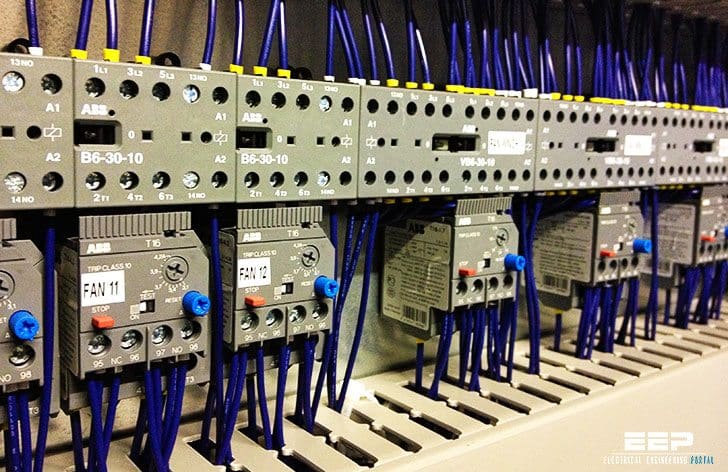Transient System Stability
A power system may be said to have transient stability if the various generating stations will regain equilibrium following a periodic system disturbances. System disturbances which cause the greatest trouble are those due to line faults.

A line fault, in addition to the changes in generator loadings which it causes before being cleared, will trip out a radial line causing a loss of load, or else it will trip one of the interconnecting lines of a network, thereby requiring a readjustment of phase angles all around and at the same time increasing the impedance between plants and impairing the flow of synchronizing power.
Transient stability studies are essentially a study of the momentary-speed changes of rotating equipment, which are functions of their inertias.
Factors Affecting Transient Stability
The following factors can affect transient stability:
- Generator WR2X rpm2. The greater this quantity the lower the acceleration factor .
- System Impedance, which must include the transient reactances of all generating units. This affects phase angles and the flow of synchronizing power.
- Duration of the fault, chosen as the criterion for stability. Duration will be dependent upon the circuit-breaker speeds and the relay schemes used.
- Generator loadings prior to the fault which will determine the internal voltages and the change in output.
- System loading, which will determine the phase angles among the various internal voltages of the generators.
As any connection or situation that causes an unbalance among the three phases. A system design usually requires that transient stability shall be maintained if the most important interconnecting line of a network shall be tripped out due to one or more of the typesof fault which may be experienced.
Faults Analysis
Fault currents cause equipment damage due to both terminal and mechanical processes. Goal of fault is to determine the magnitudes of the currents present during the fault.
Ground Fault
Is an undesirable condition in an electrical system, in which electrical current flows to the ground.
Distribution and transmission networks are generally protected against faults in such a way that a faulty component or transmission line is automatically disconnected with the aid of an associated circuit breaker.
Types of Faults
General classification of faults:
- Metric faults: system remains balanced. These faults are relatively rare, but are the easiestto analyze.
- Unsymmetrical faults: system is no longer balanced. Very common, but more difficult to analyze.
- The most common type of fault on a three phase system by far is the single line-toground, followed by the line-to-line faults, double line-to-ground faults, and balanced three phase faults.
Single-Line to Ground Fault
This fault requires the zero-positive and negative-sequence networks for phase “a” be placed in series in addition to 3Zf in order to compute the sequence currents for phase “a”.

Line to Line Fault
Consider a fault between phase “b” and “c” through an impedance Zf figure. Connecting the sequence networks for phase “a” as found earlier (positive and negative sequence networks in opposition).

Double Line to Ground Fault
Here phase “b” and “c” are shorted and connected to ground through a fault impedance Zf .

Three Phase Fault (Three Line to Ground Fault)
The three-phase fault is often th emost severe type of fault.

Reference: Faults on ElectricalSystem – Victor C. Racaza











Thanks so much for this unique article on factors affecting transient stability of power system. please can you send me a copy?
Thank you for the notes they have really helped me.
Excelente información gracias saludos